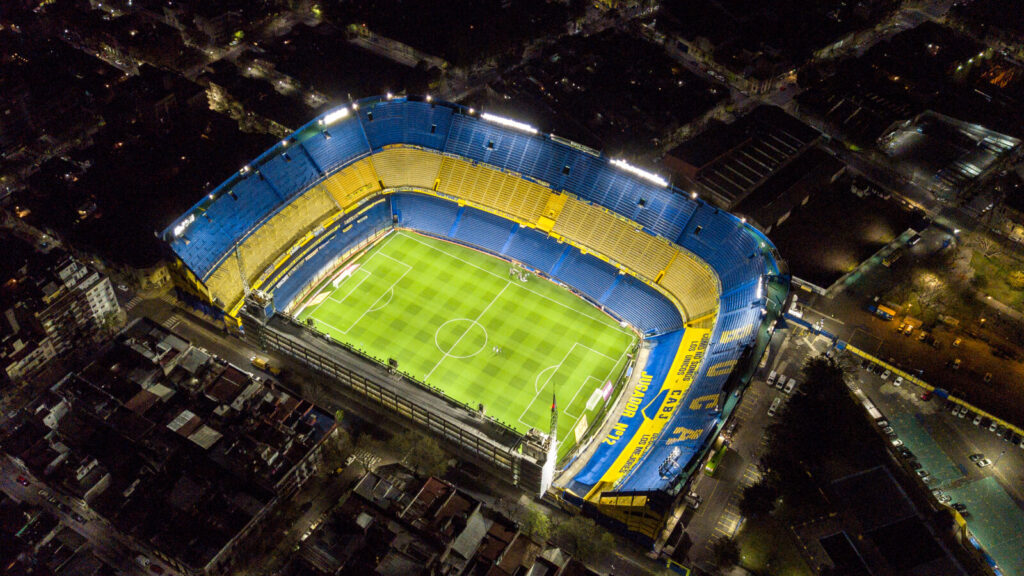Are you a football enthusiast? If yes, then you should be aware of these stadiums to maximize your football viewing experience. South America has become the capital of football and has offered some of the closest matches in recent times. Its football culture intertwines with its people’s identity. Major stadiums here are where unforgettable matches are played, and legends are born. These great venues are not just structures but sacred landmarks, where emotion, history, and sports merge into one.
We already covered most iconic stadiums in United Kingdom and Europe and you can read all about them on our website as well.
So, now let’s check out some of the most Iconic Football Stadiums in South America.
Maracanã Stadium (Rio de Janeiro, Brazil)
Located in Rio de Janeiro, Brazil, the Maracanã Stadium was built in 1950 for the FIFA World Cup and held the unforgettable final match between Brazil and Uruguay which is still regarded as one of the biggest shocks in football. Maracanã Stadium opened its doors to the FIFA World Cup in 1950. It earned legendary status after the infamous “Maracanazo,” where Uruguay defeated Brazil in the final, an event forever etched into the history of football. The stadium has witnessed Pelé’s 1000th goal, Zico’s greatness, and many Copa Libertadores finals in its years of glory.
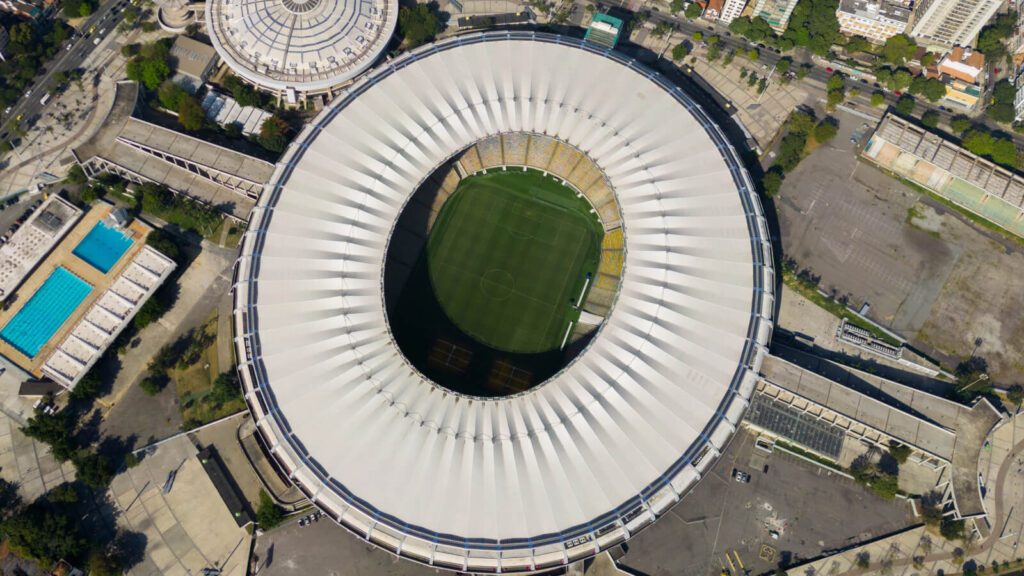
This modernized stadium was originally built to accommodate almost 200,000 spectators, a number now reduced to around 78,000. It consists of a circular design, ensuring unrivaled sight lines from each seat. Enhancements that have been incorporated into Maracanã Stadium include better seating systems, acoustics, and safety features.
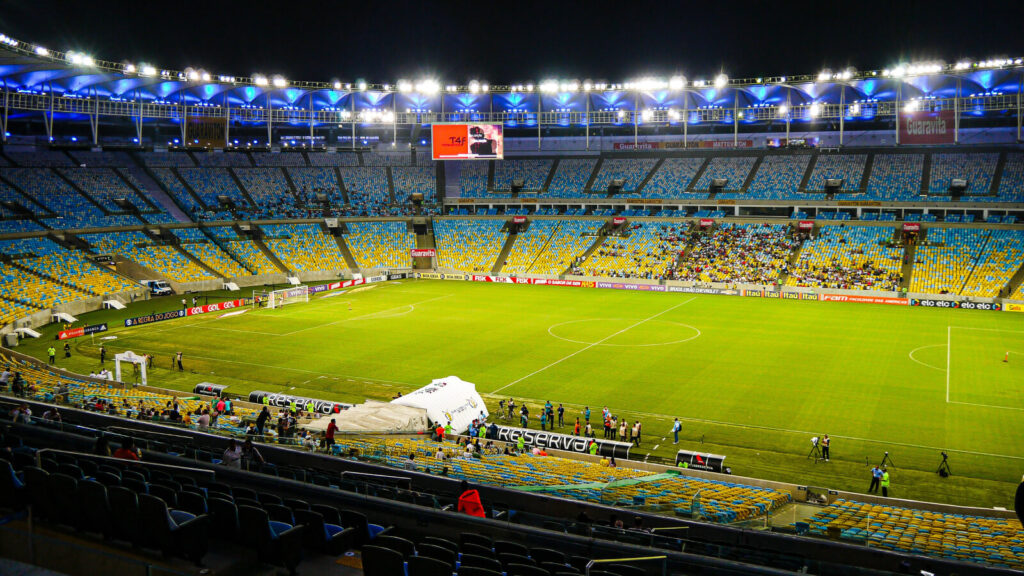
La Bombonera (Buenos Aires, Argentina)
La Bombonera in Buenos Aires, Argentina, embodies the great emotion of South American football. Boca Juniors’ home ground, with its steep stands and close configuration, amplifies the fury of every game, creating a cauldron of sound and energy. Superclásicos against River Plate have seen Diego Maradona, Juan Román Riquelme, and Carlos Tevez all ply their trade. The stadium was built on the site of a wooden stadium.
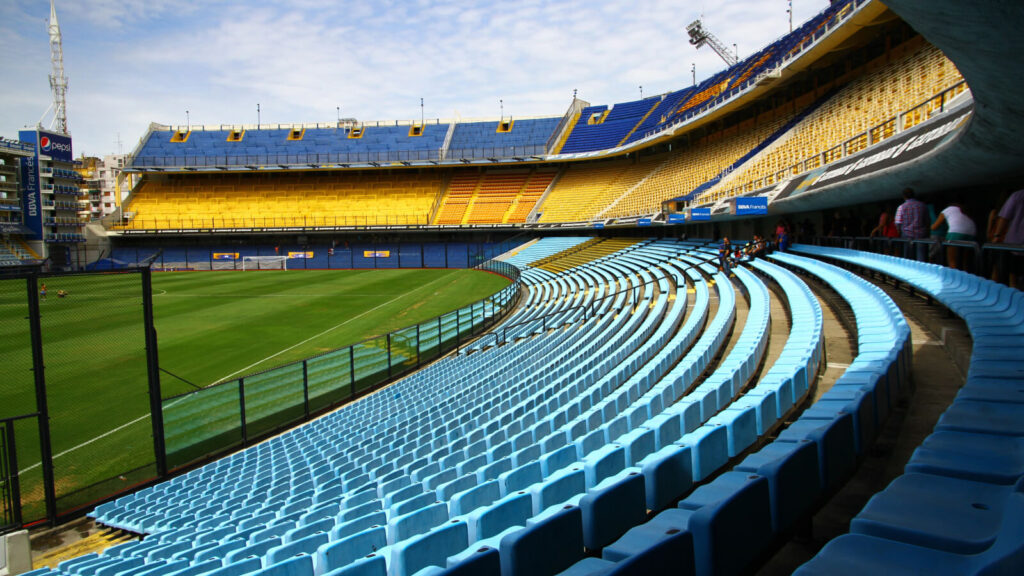
Boca Juniors’ home, La Bombonera, became a fortress since its birth in 1940. With steep stands and a vertical design, fans sit very close to the pitch, making the atmosphere very charged. The irregular shape and acoustics enhance the noise and that means it is one of the most intimidating stadiums in world football.
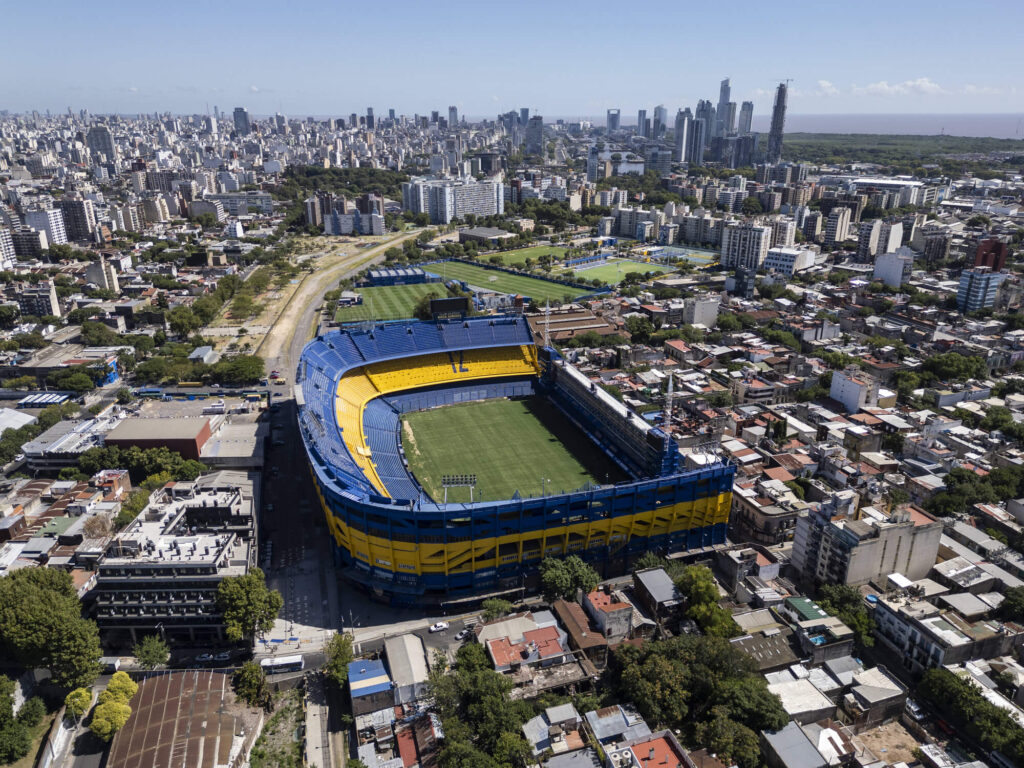
Boca Juniors’ supporters, also known as “La Doce” (The Twelfth Man), produce an atmosphere so dense and deafening that it can rattle the souls of their opponents’ players. Its name means “The Chocolate Box” due to its shape. Diego Maradona once called it the most beautiful stadium in the world.
Estadio Centenario (Montevideo, Uruguay)
Estadio Centenario in Montevideo represents itself as not merely a peculiar landmark for a football match but one of the finest grounds to have had its opening in 1930 at the final of a FIFA World Cup with a specific intention of dedicating it to work of celebrating Uruguay’s centenary of independence and since then has served as a bastion for national pride and seen all the pomp that has come around as football has grown around the world. The stadium is so impactful that in 1983, FIFA called it the first Historical Monument of World Football.
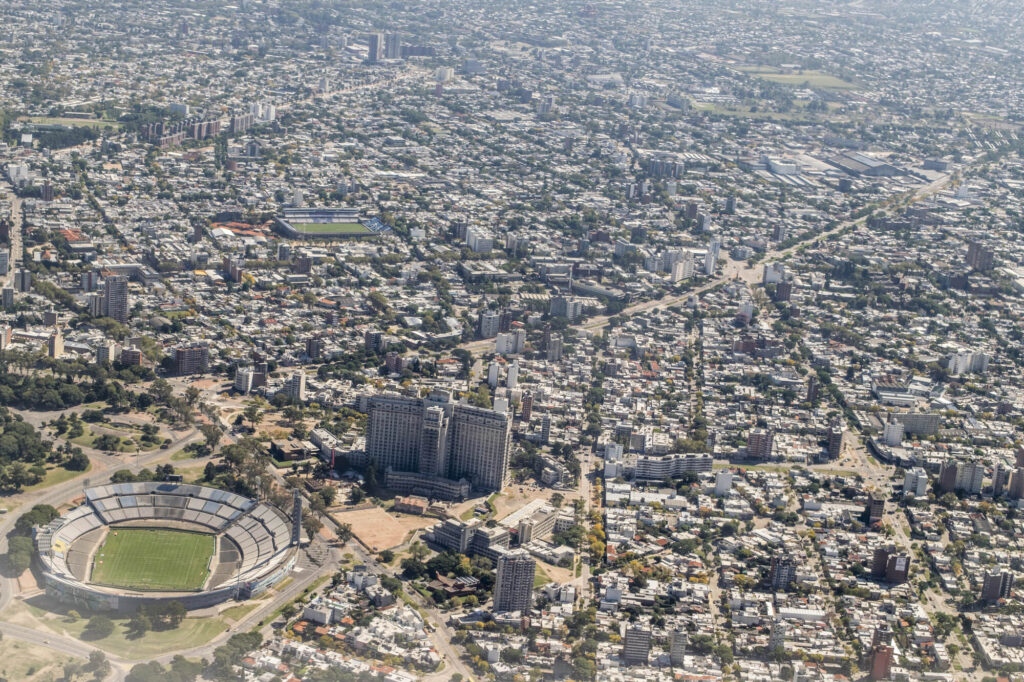
Classic design with a high main stand and a capacity of about 60,000. The unwavering energy of Uruguayan fans makes it a hard venue for any visiting team. While recognized by FIFA as a “monument of world football,” it bears much weight in the historical significance of the game. This stadium played host to the first FIFA World Cup final ever. The stadium boasts a “Tower of Homage” that holds aspects of Uruguay’s footballing history.
Estadio Monumental (Buenos Aires, Argentina)
The Monumental Stadium hosts River Plate and is among the most prominent in South America, holding over 70,000 people. It is the largest stadium in South America and has been the reason for so many tough battles in the field.
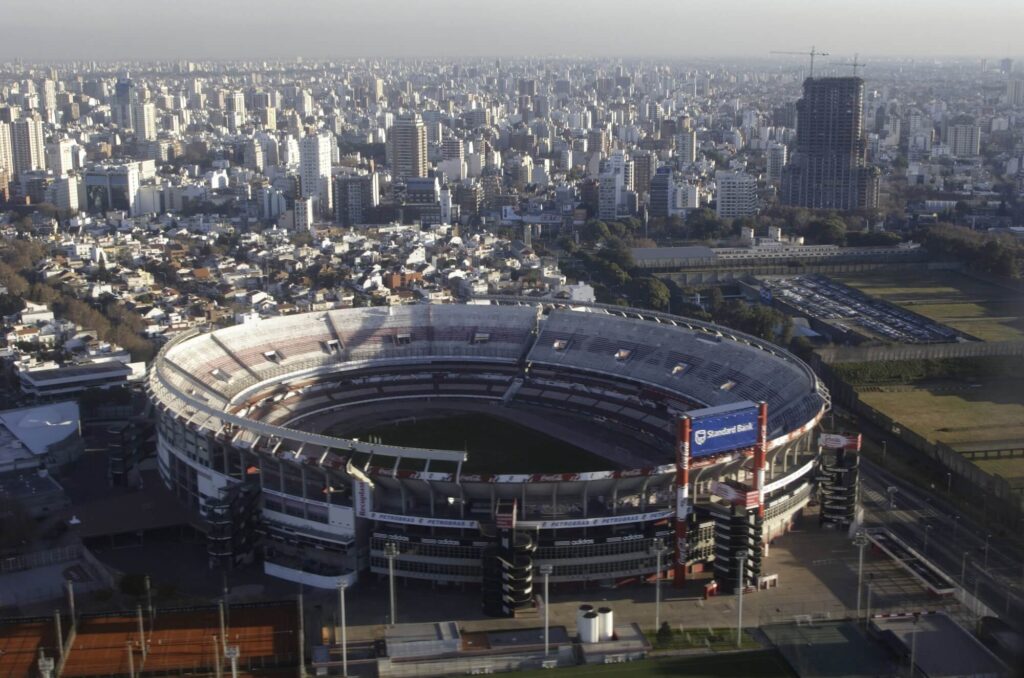
The stadium is very historic and is part of 4 finals of the Copa America. With its rich history, the stadium has hosted matches for the Argentinian national team, including the win in the 1978 World Cup final.

Home to River Plate, it hosted Argentina’s 1978 FIFA World Cup victory. Argentina’s largest stadium, with more than 70,000 seats, has undergone various renovations to modernize its facilities. It remains the heart of Argentine football, attracting fans and tourists worldwide. Estadio Monumental hosted the 1978 World Cup final, where Argentina defeated the Netherlands.
Estadio Hernando Siles (La Paz, Bolivia)
In La Paz, Bolivia, Estadio Hernando Siles is famous for its extreme altitude, which sits at a staggering 3,600 meters above sea level. This game has history when Brazil was defeated after 40 years by Bolivia. Being the country’s largest stadium, Estadio has a very high altitude which makes this stadium unique and gives new direction to the fans who are watching the football here.
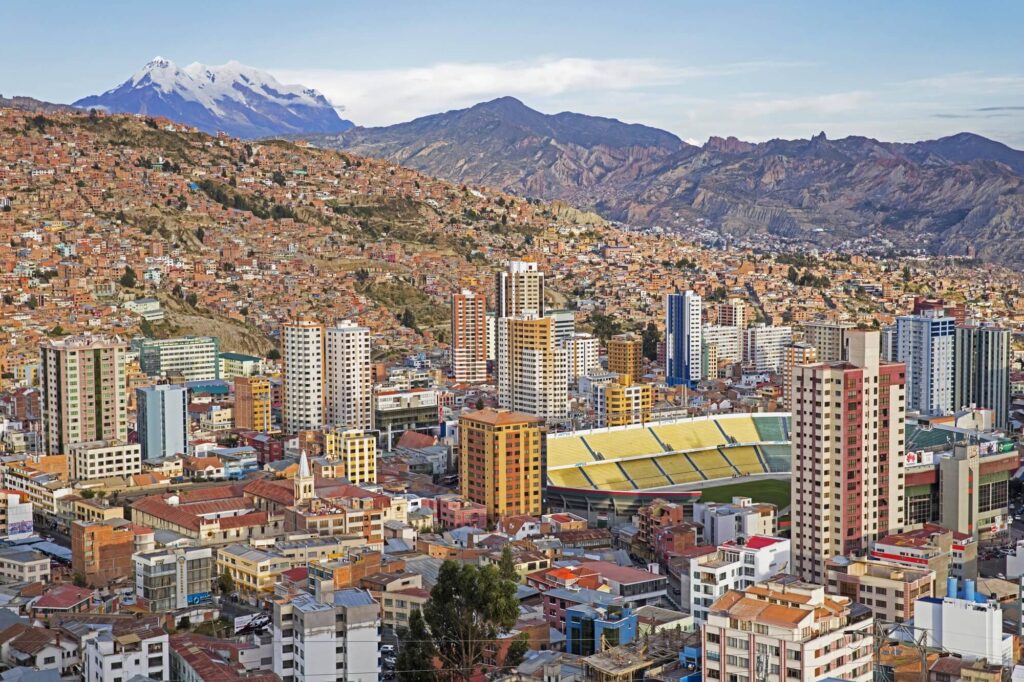
The altitude has become part of the Bolivian home advantage throughout history: notable wins include Argentina and Brazil. The design of the stadium is built openly, presenting fantastic views of the surrounding mountains. The thin altitude makes it hard to breathe for the visiting players; passionate Bolivian fans make it much worse for their opposing counterparts.
Estádio Beira-Rio (Porto Alegre, Brazil)
Estádio Beira-Rio is the home of Internacional in Porto Alegre, Brazil, and stands tall at the heart of Brazilian football history. The stadium has been the reason for so many close encounters and has registered itself as one of the most historic stadiums in South America.
It was one of the venues for the 2014 FIFA World Cup and has since hosted intense derbies between clubs and international events. It has received some modern treatment; towering roofs which improve the perception of viewing. The stadium is colloquially known as “Gigante da Beira-Rio” in Portuguese, which means “Giant on the River Bank.”
Arena Corinthians
Arena Corinthians, located in São Paulo, is one of the latest stadiums to be built in South America for the FIFA World Cup 2014. Interestingly due to some FIFA rules it was called Arena de São Paulo during the FIFA World Cup. The stadium was the host of the first watch of the 2014 FIFA World Cup and was highly appreciated by a lot of fans and spectators for the environment and weather here.
It is now ultra-modern and features a humongous LED façade with high-end finishings. Corinthians supporters, Gaviões da Fiel, offer a daunting atmosphere tinged with electricity. In 2015, Corinthians secured their first major title at the stadium, further cementing it into the club’s history.
Conclusion
Like Maracanã witnessed the 1,000th goal of Pelé and La Bombonera has seen the height of genius in Diego Armando Maradona, these arenas have seen many unforgettable experiences become part of history and will assume a revered role in constructing the story of South American football. The tall Estadio Hernando Siles and the newer Ligga Arena together with the historical heft of Estadio Nacional Julio Martínez Prádanos have all become hallowed venues for football lovers. To understand the passion, history, and culture great stadiums keep, is a pilgrimage for one such true fan.
